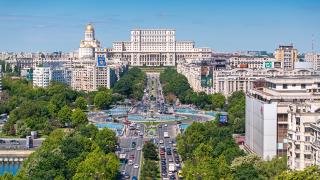North Africa is experiencing a turbulent political and economic period. Meanwhile the region seeks to increase the pace of development with cement consumption reaching 100Mt in 2018. Domestically, surplus capacity has translated into a more competitive environment, with many producers increasingly turning to the export market.
The five north African countries of Algeria, Egypt, Libya, Morocco and Tunisia are all middle-income countries with high development needs and a background of ongoing economic and political reform. While the Arab Spring Revolutions of 2010 swept many of the heads of state from power, military-backed rulers are holding onto power, offering stability but also causing resentment in many of these countries. Public companies determine much of the contributions to GDP growth. Structural reform has been a repeated message from leaders in the region and will set the groundwork for long-term recovery and economic growth. This can be seen in Algeria’s Government Action Plan (adopted in 2017), which aims to consolidate and reduce debt, and Egypt’s home-grown reform programme that has a US$4.5bn budget to improve the macroeconomic environment.
